Up till now we have been subjected to chaotic changes in the weather this March. High winds, freezing temperatures overnight, sunshine and rain and more rain and clouds with temperatures about ten degrees under seasonal average take turns to fill the days.

The first of March saw the plum tree flowers frozen and brown.

Whereas a week earlier it had been full of flowers.

Four rows of broad beans were frozen overnight in an extremely low temperature. I could have avoided the damage by simply covering the plants with a fleece or even some newspaper but they completely slipped my mind.

It has not been all bad news and the Goat Willow (Salix caprea) is open and welcoming the honey bees, bumble bees, solitary bees and butterflies – especially when it is sunny. As you can see our hives are very close to the willow, which is on the left of the picture, so they can take advantage of short sunny spells in between the rain. Standing under the tree and listening to the hum above your head feels so peaceful. There is a 19 second video if you would like to share the bees.

It is good to see the girls collecting such healthy sized sacs of pollen.

The willow provides nectar as well as pollen. This is a Andrena cineraria (Ashy mining bee). They have nested in the past under the large plum tree.

Checking under the plum tree I saw a number of male Andrena cineraria flying over the ground and this one was kind enough to pose on a daisy for me while he had a snack. It looks like they are keeping to the same nesting area.

Last week the Osmia cornuta emerged from their holes. The males emerge first and on sunny days they fly constantly around the bee hotels hoping for a female to emerge. I have just seen a female prospecting one of the bee hotels so it will soon be time to watch the nest building. Check out last year’s post if you would like to see more.

On the opposite side of the garden from the bees is an area that has always been full of lesser celandine (Ficaria verna). I do my best but I find it difficult to do more than try and keep it out the borders.

I probably would not mind it so much if the bees liked it but usually it is only flies that I see on them.

One thing you can be sure about bees is that you can never say never, when it comes to their behaviour.

Keeping on the unusual – this is a double headed daffodil. It is the first one I have seen. Is it unusual?

This hyacinth is probably easier to explain, as it looks as if it has self-sown. Not very striking but at least it is a pretty colour.

It might be worth looking under your Hellebores as there are lots of seedlings under mine.

Looking closer the second leaves are just starting to appear but they could easily be overlooked by an enthusiastic weeding.

This spring has been so wet and windy that I have come to realise how useful the downward facing flowers of the Hellebore are. The pollen is kept dry for the bees and they are sheltered from the winds that make flying and nectar gathering difficult.

The green tubular structures are that the bee is visiting are the Hellebores nectaries and provide nectar which is collected by honey bees and so very valuable to the overwintering queen bumble bees when they awaken on warmer winter days.
This year my previous year’s seedlings have all done well and are settling into positions at the base of deciduous trees and plants. I have my seed trays all ready so my next job in the garden is to fill them up with more Hellebore seedlings as I have already marked out in my mind where I can plant them in the autumn.



































 The other star of our June/July garden is the Larkspur (Delphinium consolida). I have found these grow best here if left to self-seed or sown in the autumn straight into the soil.
The other star of our June/July garden is the Larkspur (Delphinium consolida). I have found these grow best here if left to self-seed or sown in the autumn straight into the soil.








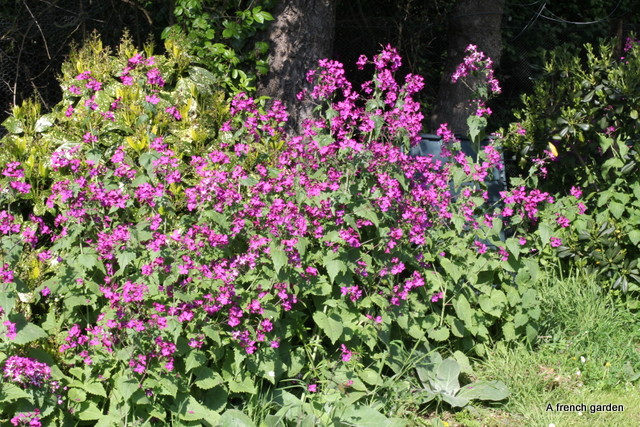



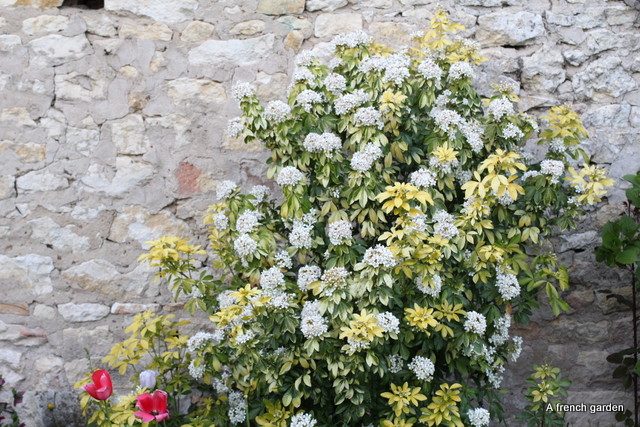

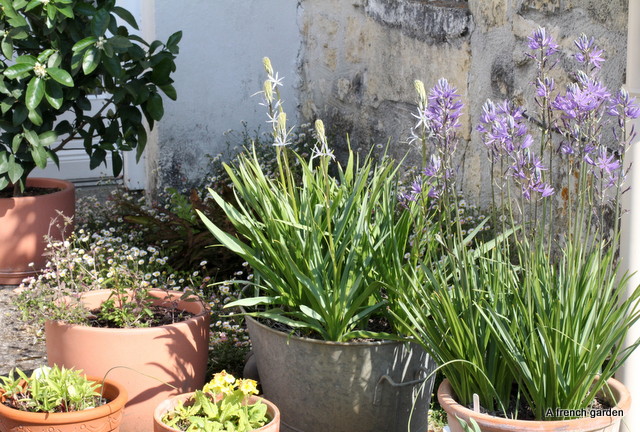
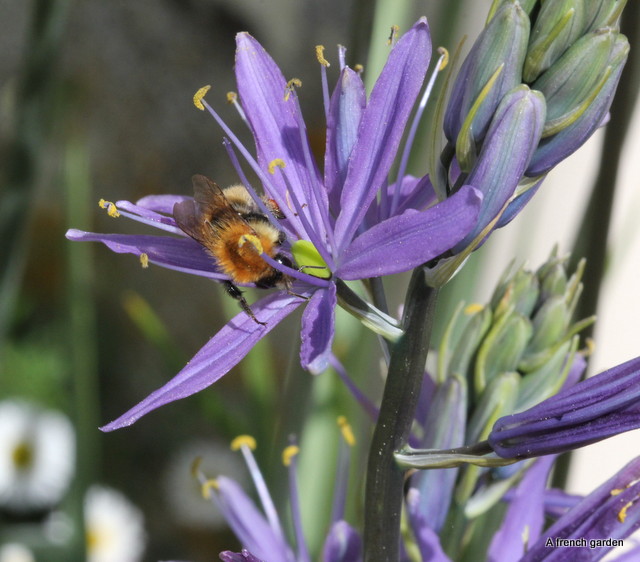
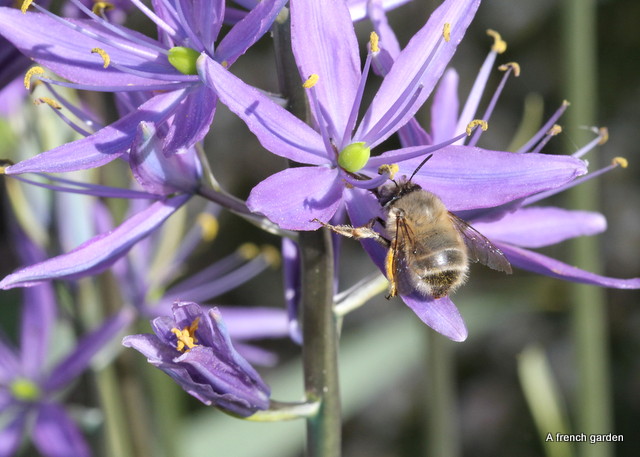
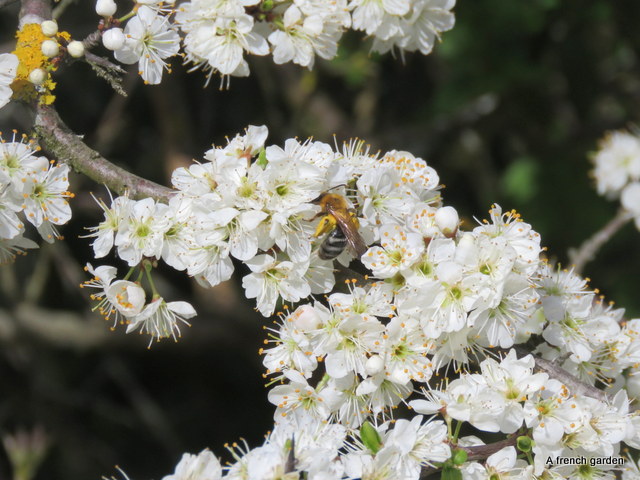
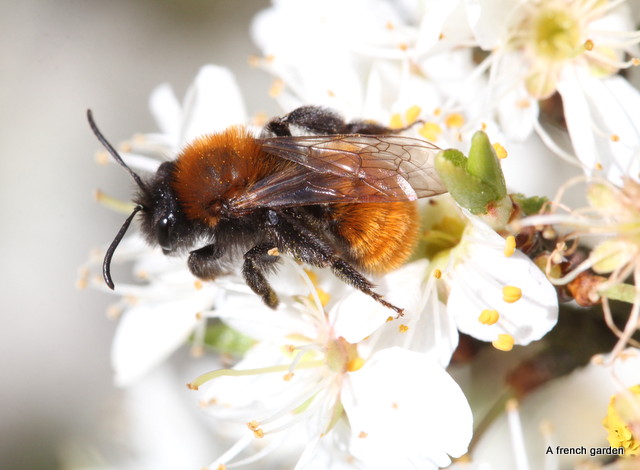



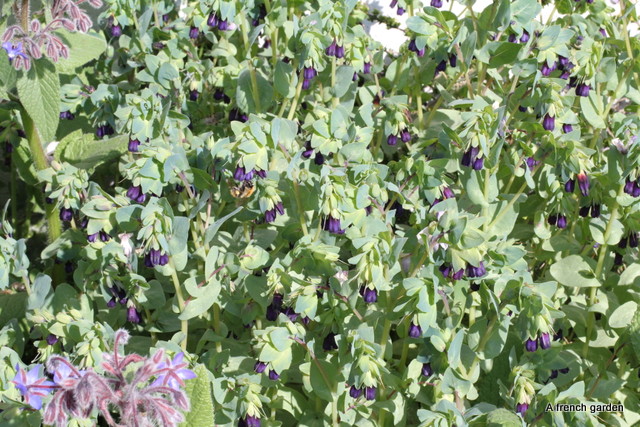



















 But frankly, what does a beekeeper and gardener do on holiday? Well, apart from enjoying sunshine and temperatures of around 24 degrees C ( nearly 75F), naturally I chased after the girls – the feathered and buzzing varieties. The only problem was that unlike in our own garden, in Spain I did not recognize most of the flowers. So hopefully somebody can enlighten me.
But frankly, what does a beekeeper and gardener do on holiday? Well, apart from enjoying sunshine and temperatures of around 24 degrees C ( nearly 75F), naturally I chased after the girls – the feathered and buzzing varieties. The only problem was that unlike in our own garden, in Spain I did not recognize most of the flowers. So hopefully somebody can enlighten me.
 It was nice seeing the bees collecting different colours of pollen, This one from what looks like our red hot poker – Kniphofia.
It was nice seeing the bees collecting different colours of pollen, This one from what looks like our red hot poker – Kniphofia. The evening sun on this flower showed the bees still busy collecting yellow pollen.
The evening sun on this flower showed the bees still busy collecting yellow pollen.



